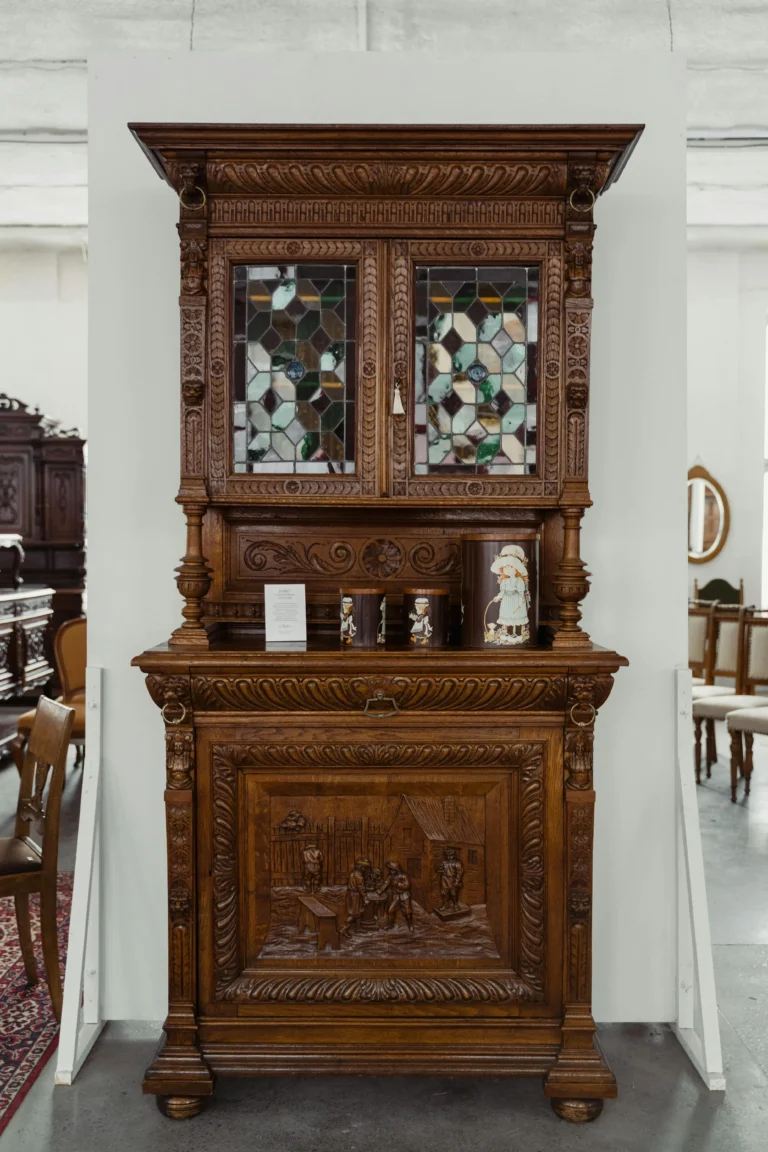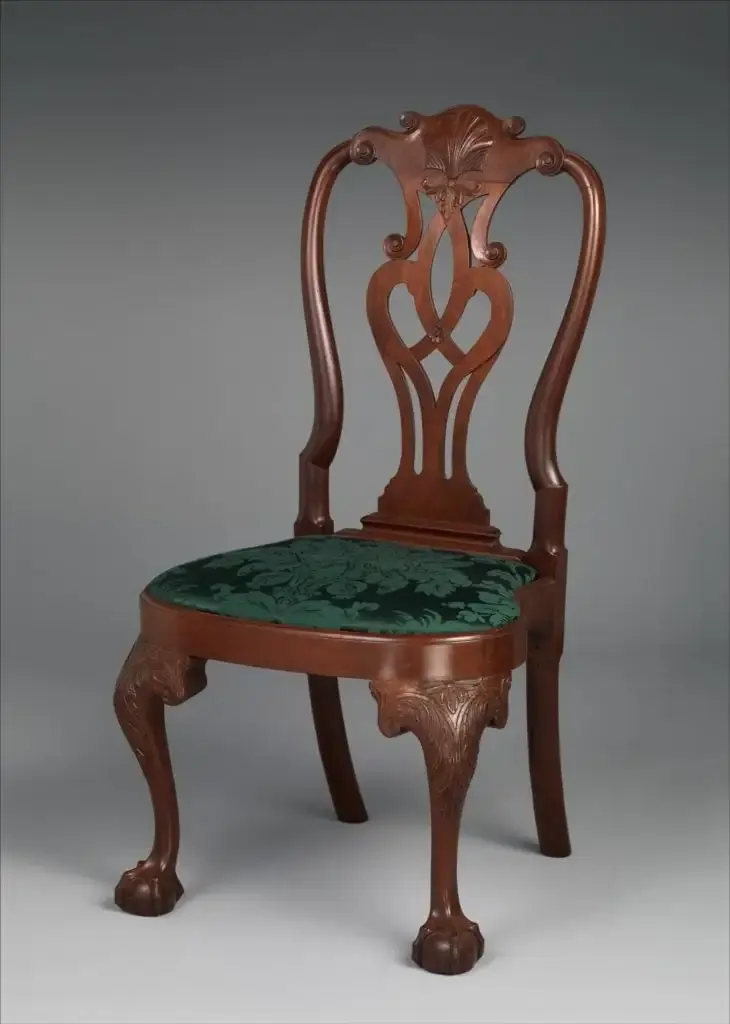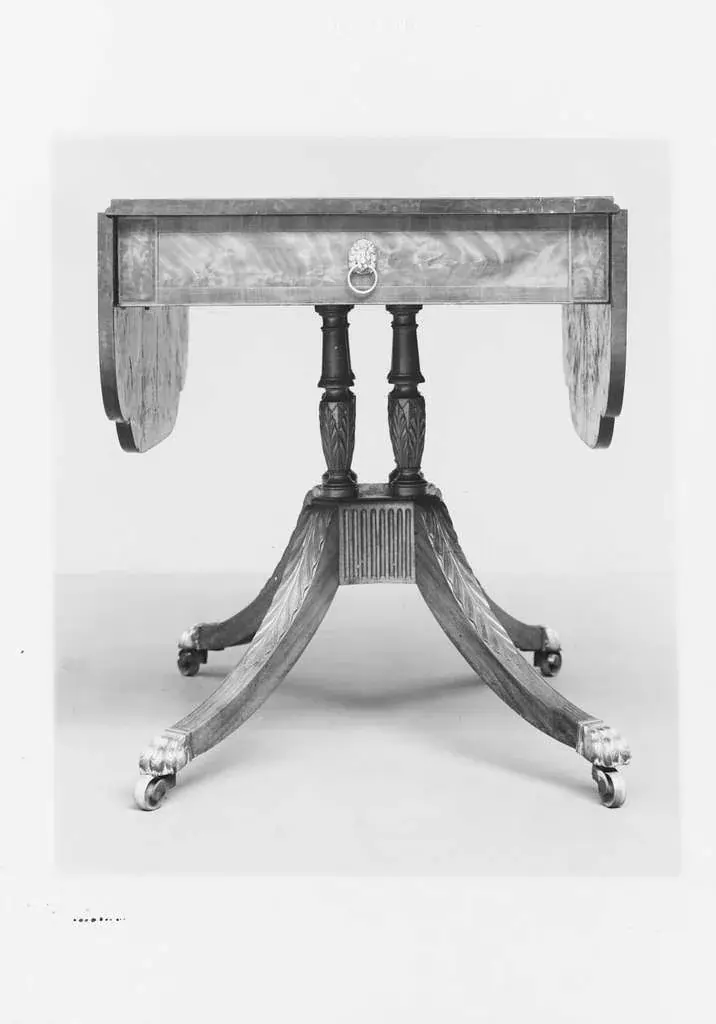The Hoosier cabinet has always captivated me with its history and practical functionality as a furniture item, in American households during the early 1900s era. These timeless kitchen workstations have significantly influenced home decor trends in the United States. Continue to be cherished collectibles that evoke memories of the past and, beyond sentimentality.
Let’s delve into the history of the cabinet and its impact, on kitchens in this guide! We’ll discuss the characteristics and design aspects that contributed to its popularity before delving into its peak era and eventual resurgence in modern times. By the end of our exploration you’ll have gained an insight into the intriguing journey of this iconic furniture piece, within Hoosier cabinet history.
Table of Contents
ToggleThe Origins of the Hoosier Cabinet
The Hoosier cabinet originated in the 1900s. Was a groundbreaking addition, to American kitchens that revolutionized the way they functioned back then. I’m captivated by the tale of how it came to be and gained popularity as it symbolizes the evolving demands of households in that era.

Early manufacturers
In the century, around the 1890s period in Indiana a group of furniture craftsmen noticed a profitable niche in the market. They found out that freestanding kitchen cabinets that offered both storage and workspace were greatly sought after. These cabinets resembled bakers cabinets. With added storage options making them popular items to sell. Indiana’s abundant hardwood forests contributed to a furniture and cabinet making sector creating an environment, for the growth of this innovative product.
The Hoosier Manufacturing Company
One of the pioneering companies, from the manufacturing era is the Hoosier Manufacturing Company which was established in 1898 in Albany by James McQuinn. A glassmaker his son Emmett McQuinn along with two business partners from Muncie John M.Maring and Thomas Hart. The company started off by making seed separators, for farms. Their kitchen cabinet soon became their flagship product.
In the year 1900 following a fire that ravaged their Albany plant location and forced their relocation to New Castle, in Indiana where the Hoosier Manufacturing Company ushered in a chapter in its history marked by advancements in manufacturing efficiency through the adoption of interchangeable components and standardized products, alongside the introduction of assembly line techniques resulting in a workforce expansion to 470 employees by 1913.
The success of the Hoosier Manufacturing Company can be credited to their prowess, in advertising, distribution and manufacturing. They established a network of dealers. Placed importance on advertising their impactful marketing strategies were aimed at middle and working class families through newspapers and magazines, with budget friendly payment options.
Why it's called a 'Hoosier' cabinet
The term ‘Hoosier cabinet’ has a backstory, to it! For two centuries since the 1830s in Indiana’s history have been identified by the moniker “Hoosiers.” Among the speculations surrounding the roots of this nickname lies an accepted theory proposing that it originated from a contractor bearing the name Hoosier who had a preference, for hiring workers from Indiana exclusively known as “Hoosiers men.” This eventually led to all residents of Indiana being affectionately referred to as Hoosiers.
The fame of the Hoosier Manufacturing Company resulted in the term ‘Hoosier cabinet’ being used generically to refer to this furniture style like how Kleenex’s commonly associated with facial tissues in everyday language usage emphasizing the strong historical connection of this furniture piece, to Indiana’s local heritage.
The Hoosier cabinet became a hit, with housewives who were used to using tools and regular kitchen tables for cooking meals at home. Its innovative design aimed to simplify housework by serving as both a storage space and a work surface, on wheels. This made it easier for homemakers to reach all their cooking essentials without having to walk much and enabled them to sit comfortably while preparing meals.
Key Features and Design
The Hoosier cabinet became a hit thanks, to its design and useful features that were essential for kitchens, in the 1900s.
Cabinet structure
The classic Hoosier cabinet was known for its three part design layout; the lower unit was often equipped with wheels, for easy movement and contained a spacious compartment with a pull out shelf and multiple drawers on the side, for convenient storage of commonly used items.
Above the section is the cabinet, with smaller compartments and doors that are shallower in depth compared to the base cabinet’s larger compartments, below it.
Between the lower sections were two metal channels that linked them together seamlessly. The sliding countertop was guided by these channels. Typically featured two drawers attached underneath it. This ingenious setup not optimized the work area. Also kept the overall footprint compact when the countertop was not, in use.
Built-in accessories
The Hoosier cabinet stood out for its built in features that aimed to streamline kitchen chores and keep things tidy and neat. Among the standout components was the dual purpose flour bin and sifter – an addition that could store, up to 50 pounds of flour and came with an integrated sifting mechanism at the bottom, for effortless measuring and sifting without the need to take out the bin from the cabinet.
Other common built-in accessories included:
- A sugar bin and sifter
- Spice racks and compartments
- Hooks for pots and pans
- Pull-out bread boards
- Bread boxes
- Storage bins for pantry staples
Some high end models even came with writing areas and foldable ironing surfaces along, with traps for ants as features. These add-ons were frequently paired with custom made glass containers designed to fit the cabinet’s shelves. A standard group of glass items comprised containers for coffee and tea a container for salt and multiple jars, for spices.
Popular materials used
In the past Hoosier cabinets, from Indiana were mostly made of oak wood due to the hardwood forests, in the region. The choice of wood not guaranteed longevity but also enabled a lovely polished look that highlighted the woods natural grain patterns.
As cabinets progressed in design and style over time makers started incorporating materials to keep up with shifting preferences and lower expenses. Newer models frequently utilized lower quality woods that were painted to align with the prevailing kitchen color fashions of the era. This change, in materials and coatings enabled the introduction of budget choices while retaining the practicality of the cabinets.
Many Hoosier cabinets had a porcelain enamel top on their work surface which was both durable and easy to clean for preparing food on it while also enhancing the cabinets charm aesthetically.
Metal parts, like hardware and certain accessories played a role, in shaping the design of the cabinet as well; they weren’t just functional but also added to its unique look.
The mix of these materials and design elements led to a furniture piece that was not just practical but also pleasing, to the eye. This is why the Hoosier cabinet became a staple, in kitchens for many years.
The Golden Age of Hoosier Cabinets
In the 1920s the Hoosier cabinet reached its peak, in popularity as a kitchen workstation that captured the interest of households across America. By 1920 over 2 million Hoosier cabinets had been installed in homes indicating that approximately one out of every ten households in the country had embraced this furniture piece. The widespread acceptance of cabinets, during this era reshaped kitchens throughout the nation.
During their peak, in popularity the factories were making a 250 thousand cabinets every year to meet the increasing need the high production rate showcases how much people loved cabinets for their usefulness and effectiveness, in kitchens during that time period.
Major manufacturers
The Hoosier Manufacturing Company took the lead in meeting the demand, for cabinets in the market and was soon joined by many other manufacturers as well. We have discovered than 80 makers of Hoosier cabinets so far and one standout, among them is Coppes Napanee. A renowned manufacturer that has been crafting these cabinets for close to four decades.
The Hoosier Manufacturing Company was established in 1898 in Albany. Soon rose to prominence as a player, in the market due to its inventive methods of production and promotion strategies. By 1903,the company initiated enhancements in their manufacturing process by introducing hardware components and standardizing their products while also setting up an assembly line. This improved efficiency enabled them to manufacture 700 cabinets at their peak period making them the foremost producer of kitchen cabinets, in the United States.
Marketing and advertising
The popularity of cabinets was greatly attributed to the marketing tactics used by companies, like the Hoosier Manufacturing Company who established a dedicated network of dealers and put a strong emphasis on advertising efforts that reached out to middle and working class households through newspapers and popular magazines, like Ladies’ Home Journal and The Saturday Evening Post.
One tactic that worked well for them was providing budget options such, as “only $1 down and 49 weekly payments of $1 each ” which allowed a diverse group of people to purchase Hoosier cabinets easily accessible to a wide audience due, to their affordability and quality combination.
The ads frequently depicted cabinets as groundbreaking time saving solutions, for homemakers back in the day. One striking advertisement even stated that “Just like Lincoln emancipated the slaves before us all now the Hoosier frees women from chores!” While these assertions may sound embellished by standards they did strike a chord with consumers of that era who were keen, on adopting convenient technologies.
It’s interesting how certain ads targeted men then since they were usually the ones making decisions, about household purchases often than not. By emphasizing efficiency and modernity in their marketing strategies the Hoosier cabinet became a must have, in kitchens during the 1900s.
Decline and Modern Revival
The Hoosier cabinets popularity began to decline in the 1940s due, to reasons; however the primary factor was the emergence of built in kitchen cabinets as homes embraced modernization trends that favored integrated designs over standalone workstations, in kitchens.
By the 1930s the popularity of cabinets had declined considerably as many companies struggled to keep up with the evolving trends, in kitchen design at that time leading to closures. The eventual end of operations for the Hoosier Manufacturing Company by 1940 due, to changing market preferences.
The decline of the cabinet happened around the time, as progress in food preservation and storage methods improved significantly too. With better refrigeration technology emerging over time the demand for the dry goods storage capacity that Hoosier cabinets offered decreased. This shift in kitchen practices also played a role, in making these indispensable furniture pieces outdated.
Collectability and antique value
Hoosier cabinets have seen a revival, in years as cherished collectibles despite their waning popularity among the masses. Enthusiasts and collectors alike have rekindled an interest, in these pieces of history and are actively working to conserve them. Previously neglected in barns or passed on for sums of money antique Hoosier cabinets are now treasures sought after by a dedicated community of admirers.
The price of a Hoosier cabinet can vary depending on its condition and age. Whether it still has all its original accessories intact. A maintained oak Hoosier cabinet, with all its features can fetch a hefty sum in the thousands of dollars range. On the hand cabinets, in condition that may need some restoration work can be discovered at prices ranging from $500 to $1200.
The market, for cabinets has experienced ups and downs throughout the years. The 1990s witnessed these cabinets being sold for over USD 3500 which was not unusual then. Although prices have stabilized since that time collectors remain optimistic about the increase in value of these furniture pieces, over time.
Modern reproductions
The timeless charm of the cabinet continues to attract buyers seeking replicas in today’s market, for kitchen renovations and transformations offered by specialized companies that provide customization options to blend classic Hoosier style elements seamlessly with the practical demands of contemporary kitchen designs.
Craftsmen, with expertise in cabinet making have the ability to create personalized Hoosier style cabinets that pay homage to the design while integrating amenities seamlessly into the structure. These remakes frequently include materials and finishes which render them ideal, for homes yet retaining the essence of the authentic Hoosier cabinet design.
Looking to refurbish cabinets? You’re, in luck! Kennedy Hardware in Zionsville is a go to spot for replacement parts and accessories to keep your cabinet true, to its roots and functional in today’s kitchens.
The Hoosier cabinet stands as a tribute, to the timeless charm and practicality of kitchen furniture design as we value the artistry and innovation of eras.
Conclusion
The evolution of the cabinet, from a kitchen invention to a beloved vintage piece has left its mark on American home aesthetics and cultural heritage. In the 1900s when it gained appeal it revolutionized kitchens nationwide by providing a convenient method to arrange and simplify household chores. However the cabinet’s popularity waned with advancements in kitchen layouts and food preservation methods. This shift signaled the conclusion of an era while setting the stage for its resurgence as a sought, after collectors item.
The Hoosier cabinet remains a fascination, for fans and collectors today and acts as a connection to America’s history; its timeless charm has sparked renewed curiosity with replicas and renovations enabling younger audiences to admire its special combination of style and practicality. Reflecting on the cabinet’s heritage brings to mind its enduring influence on kitchen aesthetics and its contribution, to defining the household.
FAQs
Determining the exact age of a Hoosier cabinet can be challenging, especially for those made by Coppes Napanee. To estimate its age, you can examine aspects such as the type of finish, the presence of a metal identification tag, the assembly techniques used, and the style of the flour bin.
Hoosier cabinets were essential household items, serving multiple purposes beyond mere storage. They were designed to store kitchen essentials such as flour and sugar and included built-in tools like flour sifters, Lazy Susans for spice storage, bread boxes, and even meat grinders.
Yes, Hoosier cabinets, particularly those from the early 20th century, are considered valuable. Their market value can range from approximately $800 to $1600, depending on their condition, the accessories they include, and the materials used in their construction.
During the period from 1898 to 1920, which is known as the clear finish era, White Oak was predominantly used for the exterior of Hoosier cabinets manufactured by Coppes Napanee. If you are restoring a painted cabinet, it’s important to determine the original wood type and decide whether to maintain the paint or apply a clear finish.



